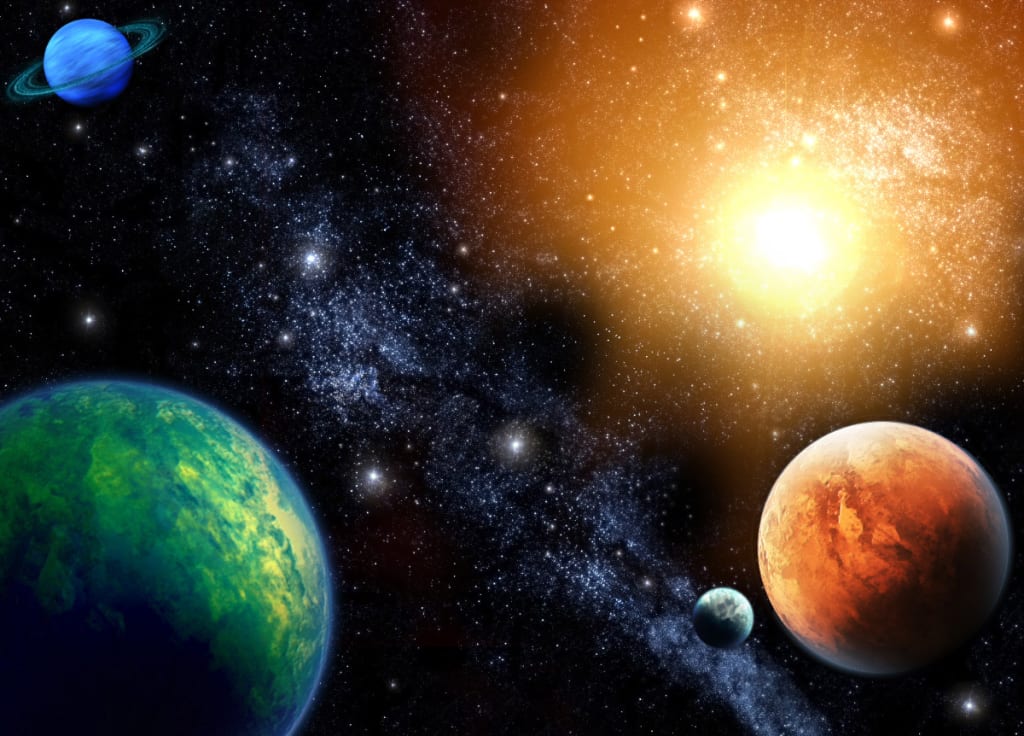
This is a depiction of Earth, the planet where you reside, within the vastness of our neighborhood, the solar system. Despite the seemingly short distance between Earth and the moon, it's a significant span. At its farthest, the Earth and the moon are approximately 252,088 miles apart. Within this distance, you could accommodate all the planets in our solar system. Speaking of planets, Jupiter's Great Red Spot is twice the size of Earth, while Saturn is nine times wider. The rings of Saturn encompass fragments as large as mountains. Yet, when compared to our Sun, they pale in comparison. From different vantage points in the solar system, Earth appears tiny, a mere speck. To illustrate, one million seconds equate to about eleven and a half days, while one billion seconds surpass 31 years.
Considering the size of Earth in relation to the Sun is awe-inspiring, especially when viewed from Mars. Carl Sagan highlighted the enormity of stars in the universe, dwarfing our Sun. VY Canis Majoris, the largest known star, is approximately 2,000 times the diameter of our Sun. However, galaxies overshadow even the grandest stars. The Milky Way, our home, spans about 100,000 light-years in diameter, encompassing billions of stars like our Sun. NGC 6744, a spiral galaxy similar to ours, stretches over 200,000 light-years across.
Zooming out further, images captured by the Hubble telescope reveal countless galaxies, each containing millions or billions of stars and their accompanying planets. Some of these galaxies formed as early as 11 billion years ago, just three billion years post-Big Bang. This era marked an intense period of star formation. Reflecting on the grand scale of the universe, concerns about trivial matters seem insignificant. Earth, our humble abode, deserves appreciation amidst the vastness of space.
Beyond the familiar territories of our solar system and the known galaxies lies a realm of cosmic mysteries that captivate the imagination and challenge human understanding. Among these mysteries are phenomena that elude explanation and beckon exploration.
One of the most enigmatic entities in the universe is the black hole. These gravitational behemoths exert such immense force that not even light can escape their grasp. Black holes form from the collapse of massive stars, creating singularities where the laws of physics break down. The event horizon, the boundary beyond which nothing can escape, shrouds black holes in intrigue. Scientists seek to unravel the secrets of black holes to understand their role in the cosmos.
Another cosmic enigma is dark matter, an elusive substance that comprises the majority of the universe's mass. Unlike ordinary matter, dark matter does not emit, absorb, or reflect light, making it invisible to telescopes. Its presence is inferred from its gravitational effects on visible matter and cosmic structures. The nature of dark matter remains one of the foremost mysteries in modern astrophysics.
Accompanying dark matter is dark energy, a mysterious force that drives the accelerated expansion of the universe. Unlike gravity, which pulls matter together, dark energy appears to push galaxies apart. Its existence challenges fundamental theories of cosmology and raises profound questions about the fate of the universe.
Beyond the realms of matter and energy, the fabric of spacetime itself holds mysteries yet to be unraveled. Gravitational waves, ripples in the fabric of spacetime, offer a new window into the universe. These waves, generated by cataclysmic events such as the collision of black holes or neutron stars, carry information about the nature of gravity and the cosmos.
The search for extraterrestrial life is another tantalizing quest that drives exploration beyond Earth. From the icy moons of Jupiter and Saturn to the distant exoplanets orbiting other stars, scientists seek signs of habitability and potential life beyond our planet. The discovery of microbial life on Mars or the detection of biosignatures on distant worlds would revolutionize our understanding of life's prevalence in the universe.
As humanity ventures further into space, questions about our place in the cosmos persist. Are we alone in the universe? What lies beyond the observable horizon? These profound inquiries inspire scientists and philosophers alike to push the boundaries of knowledge and explore the mysteries that await us among the stars.
In the vast tapestry of the cosmos, mysteries abound, inviting humanity to embark on a journey of discovery and wonder. Each revelation brings us closer to unlocking the secrets of the universe and our place within it, illuminating the grandeur and complexity of the cosmos that surrounds us.
######
About the Creator
Enjoyed the story? Support the Creator.
Subscribe for free to receive all their stories in your feed. You could also pledge your support or give them a one-off tip, letting them know you appreciate their work.





Comments (1)
I actually don’t live on Earth. I’m reading this in Venus! Good work!